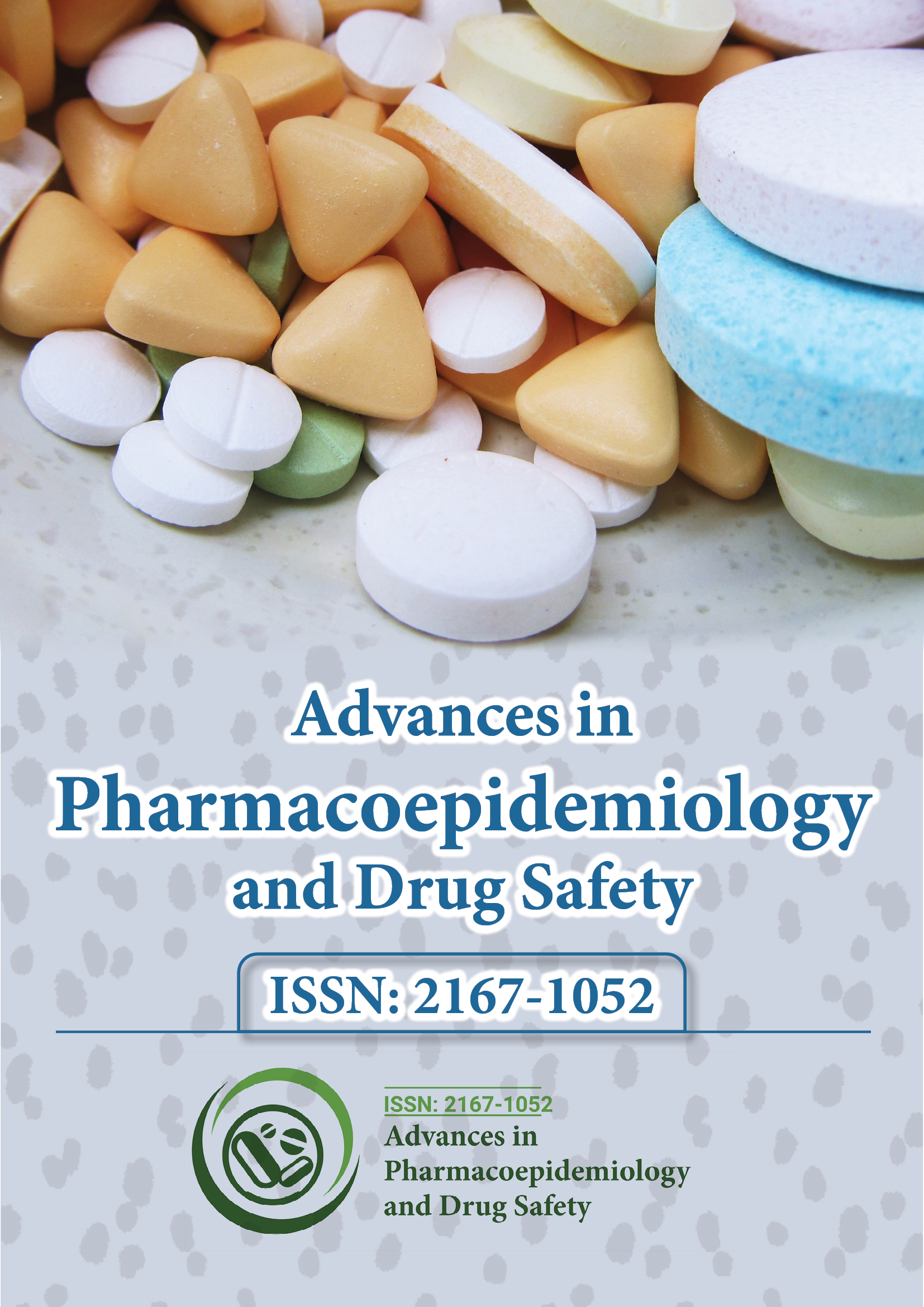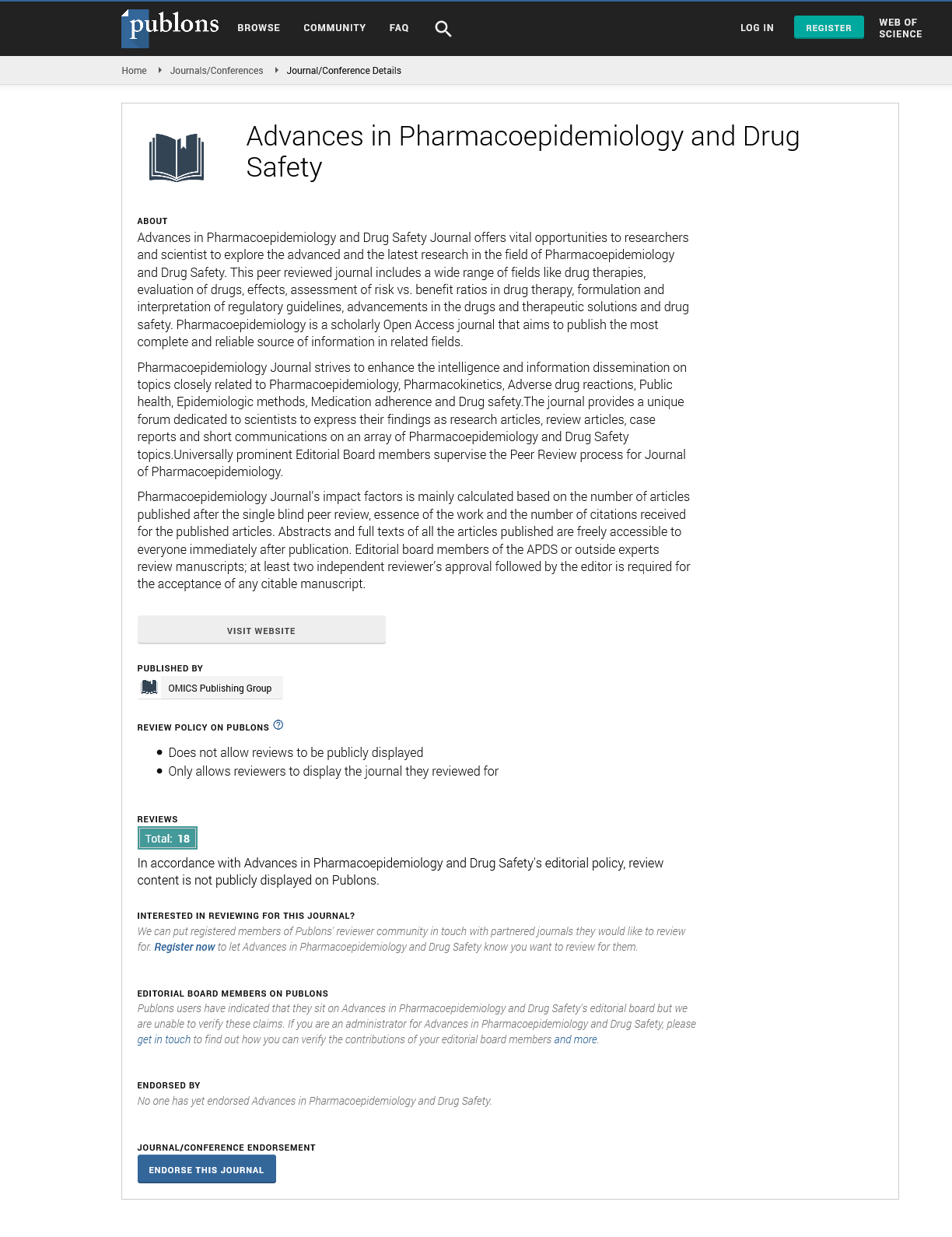Indexed In
- Open J Gate
- Genamics JournalSeek
- Academic Keys
- JournalTOCs
- RefSeek
- Hamdard University
- EBSCO A-Z
- SWB online catalog
- Publons
- Geneva Foundation for Medical Education and Research
- Euro Pub
- Google Scholar
Useful Links
Share This Page
Journal Flyer

Open Access Journals
- Agri and Aquaculture
- Biochemistry
- Bioinformatics & Systems Biology
- Business & Management
- Chemistry
- Clinical Sciences
- Engineering
- Food & Nutrition
- General Science
- Genetics & Molecular Biology
- Immunology & Microbiology
- Medical Sciences
- Neuroscience & Psychology
- Nursing & Health Care
- Pharmaceutical Sciences
Opinion Article - (2022) Volume 11, Issue 3
Clinical and Research Issues in European Traditional Herbalism
Luigi Firenzuoli*Received: 08-Apr-2022, Manuscript No. PDS-22-16865; Editor assigned: 11-Apr-2022, Pre QC No. PDS-22-16865 (PQ); Reviewed: 25-Apr-2022, QC No. PDS-22-16865; Revised: 02-May-2022, Manuscript No. PDS-22-16865 (R); Published: 12-May-2022, DOI: 10.35248/2167-1052.22.11.271
Description
Herbs are natural products and their chemical composition depends on several factors, so they vary from person to person, from energetic decoctions to the use of herbal extracts by Western methods of mainstream medicine. Traditional medicine has a very long history. It is the sum of theories, beliefs and experiences of different cultures and times that are often inexplicable, used to maintain good health, such as disease prevention, diagnosis, improvement and treatment.
In each country, traditional medicine is based on magical and religious beliefs and popular experiences, and the World Health Organization is engaged with establishing definitive guidelines for clinical research methodologies and assessing the effectiveness of traditional medicine.
European traditional herbalism
Traditional Medical Systems (TMSs) have been the primary medical system of the country of origin for centuries, and despite the predominance of current Western scientific medical models, citizens and healthcare providers rely on TMS. It has begun and replaces conventional scientifically proven treatments with unconventional ones. In general, the permanent cultural rootedness and widespread use of TMS may indicate safety, but may not indicate the effectiveness of treatment. Especially if the tradition is almost entirely based on treatments with very low and ultra-low concentrations of active ingredients, to magicalenergetic properties such as the sun, moon, etc.
Traditional European herbal medicine uses the same categories similar to Asiatic medicines, referring to ‘humoral-energetic doctrines’ that has qualities (like heat, cold, dry, humid), and elements (fire, air, water, earth, etc.) are used. European popular medicine still counsel the so-called depurative plants for treatment of dermatological illnesses, like psoriasis or eczemas, like it were due to intoxications, as well as diuretic plants for arthritis, or a decoction of Stachys (called ‘herb of fear’) used as bath to wash out fears, or hay baths as treatment of cancer.
The discussion of traditional medicine research and evaluation methods should be divided into two parts: herbal medicine and traditional procedure-based therapies.
Herbal medicine has become a popular form of healthcare. Although there are some differences between herbal and conventional pharmacological treatments, the effectiveness of herbal medicine should be tested using conventional trial methods, with some specific herbal extracts. However, the general public often misunderstands that all natural treatments are safe in nature and that herbal medicines are at risk, so research in this area needs to be intensified. The main questions are often inadequately answered and relate to the absorption/ metabolism/efficacy of herbs and their extracts, and in fact, many unsolved problem that are important in assessing their health effects.
Mind–body medicine can be considered as a complementary or alternative method of traditional Western medicine, and the various other intervention methods currently used in the CAM paradigm act in largely through the connection between mind and body. In this sense, trust in the traditional principles of medicine, which is deeply rooted in culture, can represent a kind of mind-body connection with true pharmacological action through placebo-like effects. The success of treatment is often the result of the synergistic effects of both types of treatment, but the assessment of the efficacy of traditional medicines cannot differ from that of conventional medicines.
Long-term use of herbs allows for a limited and partial selection process of short-term and medium-term safe remedies, which is incompatible with modern issues regarding synthetic drug interventions. Treatment options are often limited due to the multiple implications of pathology and disease-related efficacy in different cultures. The transfer of the medical concept to a new country can be truly misleading, especially if the drug is part of the TMS and the change is subject to local conditions and adaptation to cultural habits, its medical-therapeutic and cultural essence. It can lead to significant changes in nature. The scope of these changes varies widely, but it is possible that TMS has absorbed cultural influences from the host country years or months after the migration.
Citation: Firenzuoli L (2022) Clinical and Research Issues in European Traditional Herbalism. Adv Pharmacoepidemiol Drug Saf. 11:271.
Copyright: © 2022 Firenzuoli L. This is an open-access article distributed under the terms of the Creative Commons Attribution License, which permits unrestricted use, distribution, and reproduction in any medium, provided the original author and source are credited.

